301b F5 LTM Specialist: Maintain & Troubleshoot Free Practice Exam Questions (2025 Updated)
Prepare effectively for your F5 301b LTM Specialist: Maintain & Troubleshoot certification with our extensive collection of free, high-quality practice questions. Each question is designed to mirror the actual exam format and objectives, complete with comprehensive answers and detailed explanations. Our materials are regularly updated for 2025, ensuring you have the most current resources to build confidence and succeed on your first attempt.
An LTM Specialist configures the following iRule on an LTM device:
when HTTP_REQUEST {
if {[string tolower [HTTP::uri]] contains "/URI1/" } {
pool Pool1
}
elseif {[string tolower [HTTP::uri]] contains "/URI2/" } {
pool Pool2
}
elseif {[string tolower [HTTP::uri]] contains "/URI3/" } {
pool Pool3
}
else { pool Pool4}
}
Given the following request: http://www.example.comURI1/index.html?fu=bar &pass=1234
Which pool will be selected by the iRule?
A OneConnect profile is applied to a virtual server. The LTM Specialist would like the client source IP addresses within the 10.10.10.0/25 range to reuse an existing server side connection.
Which OneConnect profile source mask should the LTM Specialist use?
-- Exhibit –
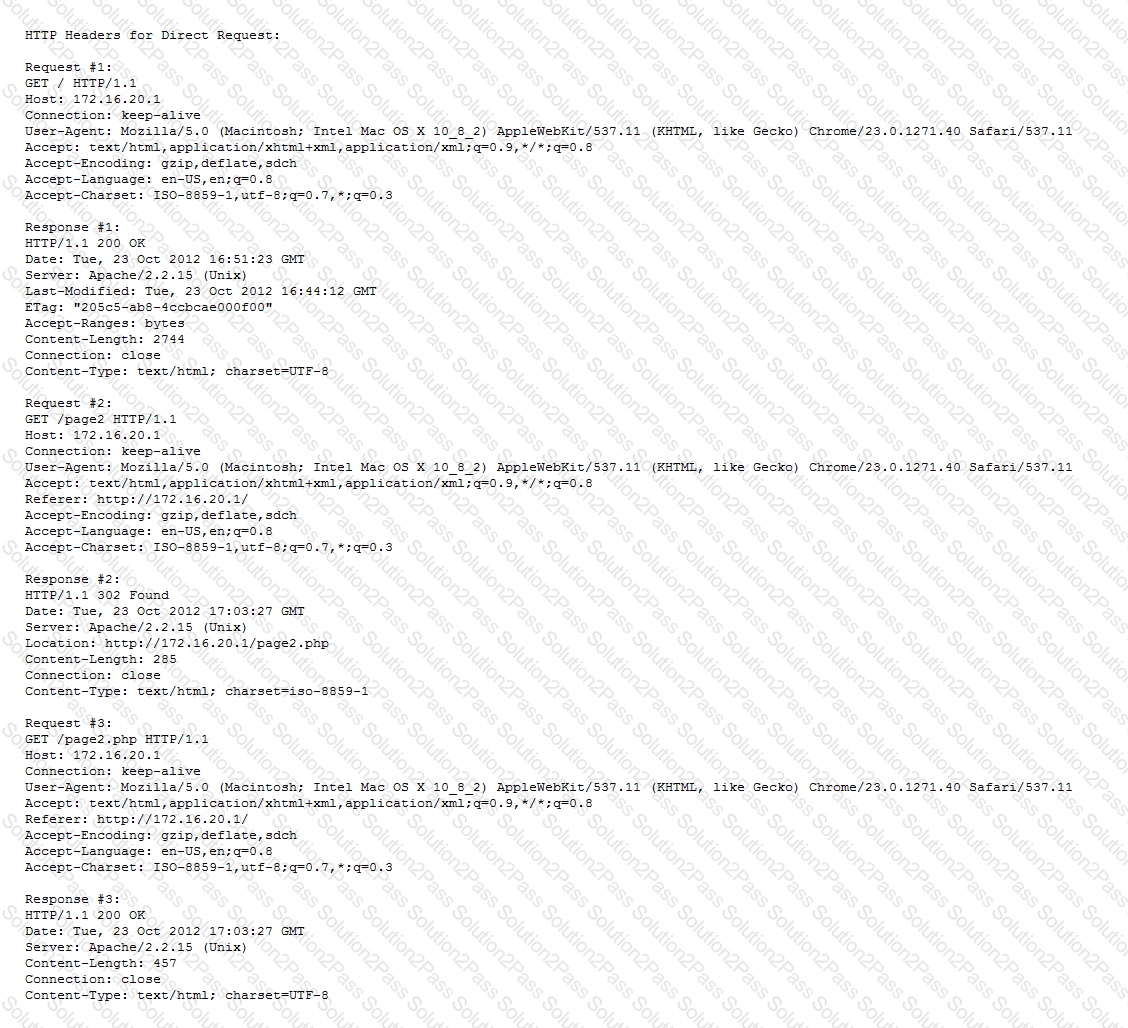
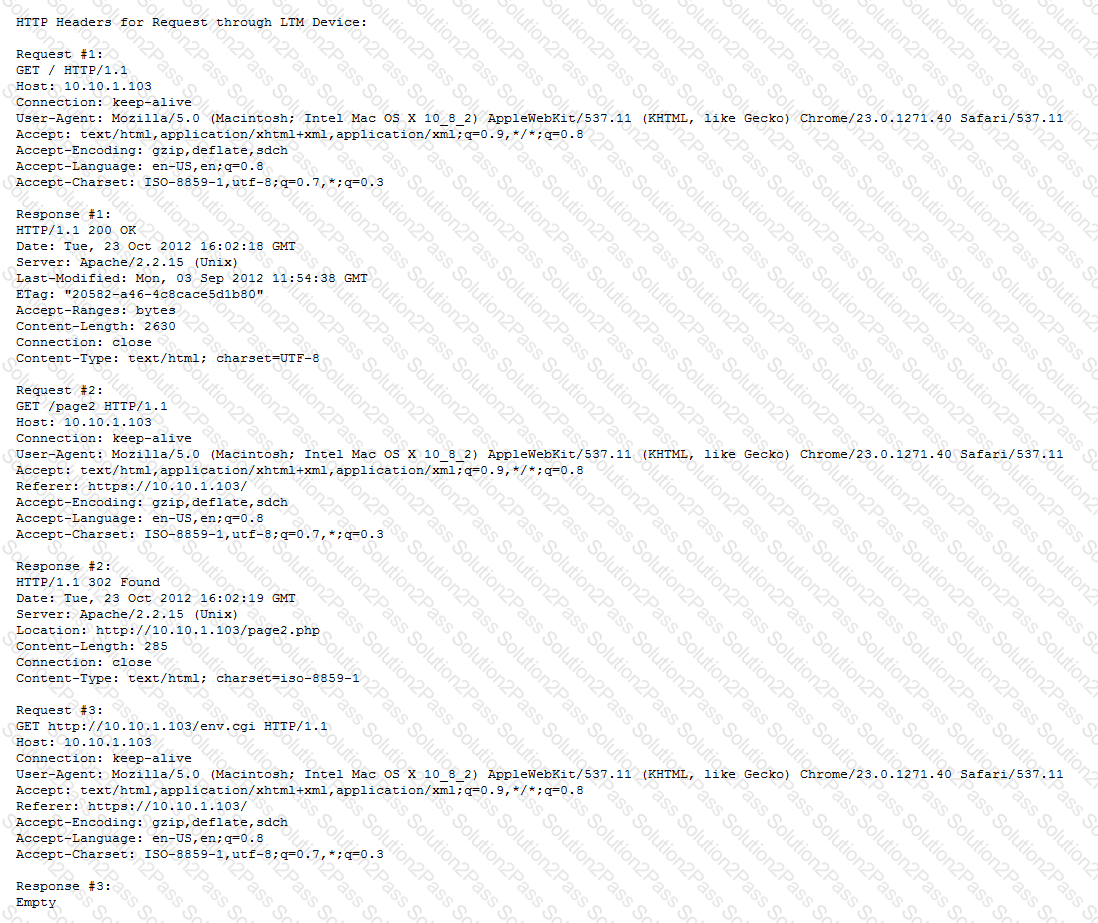
-- Exhibit --
Refer to the exhibits.
A customer requests to offload SSL for an internal website. The front page of the website loads correctly; however, selecting links on the page fails.
How should the LTM Specialist fix the issue?
An LTM Specialist has set up a custom SNMP alert.
Which command line tool should the LTM Specialist use to test the alert?
An LTM Specialist is receiving reports from customers about multiple applications failing to work properly. The LTM Specialist looks at the services running and notices that the bigd process has NOT started.
How are monitored LTM device objects marked when the bigd process is stopped?
-- Exhibit –
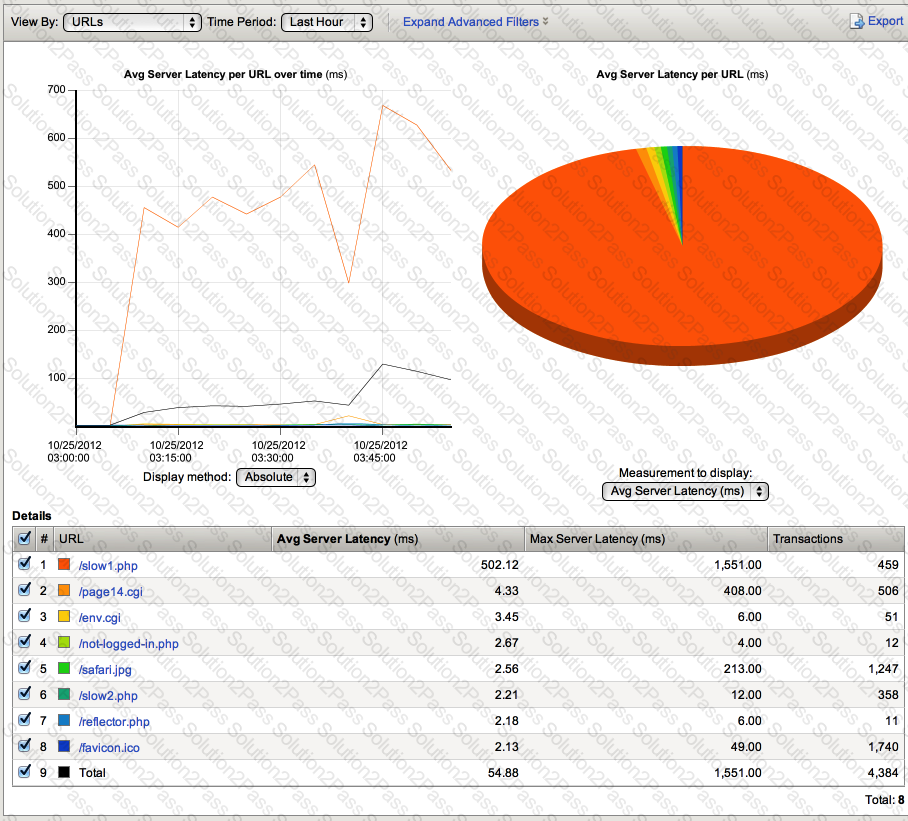
-- Exhibit --
Refer to the exhibit.
Which URL should be reported to the server/application team as getting user-visible errors?
The active LTM device in a high-availability (HA) pair performs a failover at the same time the network team reports an outage of a switch on the network.
Which two items could have caused the failover event? (Choose two.)
A device group is made up of four members: LTM-A, LTM-B, LTM-C, and LTM-D. An LTM Specialist makes a configuration change on LTM-B. Later, a different LTM Specialist notices a "changes pending" message on all devices. When logged into LTM-D, the LTM Specialist attempts to config-sync to the device group. The sync operation fails.
Why is the LTM Specialist on LTM-D unable to synchronize the configuration to the group?
-- Exhibit –
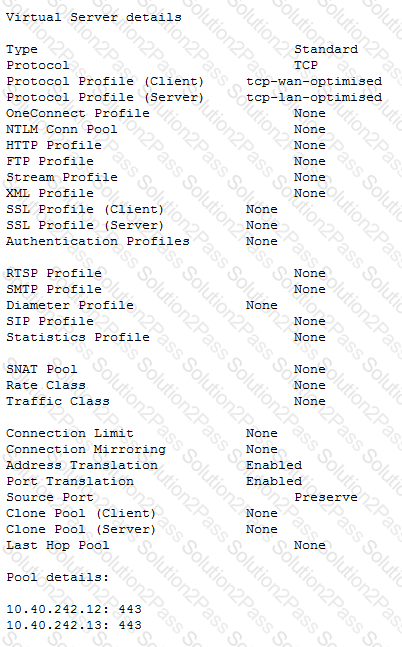
-- Exhibit --
Refer to the exhibit.
An LTM device is used to load balance web content over a secure channel.
The developers of the web content have done a trace using an HTTP profiler application. They believe that allowing the LTM device to compress traffic to the client will improve performance. The client can utilize GZIP or deflate compression algorithms.
An LTM Specialist must implement the compression.
The LTM Specialist has completed the following actions:
1. Create the relevant profile.
2. Apply the relevant profile to the virtual server (VS).
After applying the relevant profile, the LTM device is failing to compress the traffic. Instead, the traffic is being served with an error.
What is the problem?
An LTM Specialist troubleshooting an issue looks at the following /var/log/ltm entries:
Oct 2 04:52:42 slot1/tmm7 crit tmm7[21734]: 01010201:2: Inet port exhaustion on 10.143.109.5 to 10.143.147.150:53 (proto 17)
Oct 2 05:37:16 slot1/tmm7 crit tmm7[21734]: 01010201:2: Inet port exhaustion on 10.143.109.5 to 10.143.147.150:53 (proto 17)
Oct 2 05:57:32 slot1/tmm2 crit tmm2[21729]: 01010201:2: Inet port exhaustion on 10.143.109.5 to 10.143.147.150:53 (proto 17)
Oct 2 06:30:03 slot1/tmm7 crit tmm7[21734]: 01010201:2: Inet port exhaustion on 10.143.109.5 to 10.143.147.150:53 (proto 17)
Oct 2 06:37:44 slot1/tmm2 crit tmm2[21729]: 01010201:2: Inet port exhaustion on 10.143.109.5 to 10.143.147.150:53 (proto 17)
Oct 2 06:47:05 slot1/tmm5 crit tmm5[21732]: 01010201:2: Inet port exhaustion on 10.143.109.5 to 10.143.147.150:53 (proto 17)
Which configuration item should the LTM Specialist review to fix the issue?
An LTM Specialist has a single HTTPS virtual server doing SSL termination. No server SSL profile is defined. The pool members are on the internal VLAN answering on HTTP port 80. Users with certain browsers are experiencing issues.
Which two locations are most appropriate to gather packets needed to determine the SSL issue? (Choose two.)
An LTM device is monitoring pool members on port 80. The LTM device is using an HTTP monitor with a send string of GET / and a blank receive string.
What would cause the pool members to be marked down?
Which iRule will instruct the client's browser to avoid caching HTML server responses?
The LTM Specialist is writing a custom HTTP monitor for a web application and has viewed the content by accessing the site directly via their browser. The monitor continually fails. The monitor configuration is:
ltm monitor http /Common/exampleComMonitor {
defaults-from /Common/http
destination *:*
interval 5
recv "Recent Searches"
send "GET /app/feed/current\?uid=20145 HTTP/1.1\\r\\nHost: www.example.com\\r\\nAccept-EncodinG. gzip, deflate\\r\\nConnection: close\\r\\n\\r\\n"
time-until-up 0
timeout 16
}
A trace shows the following request and response:
Request:
GET /app/feed/current?uid=20145 HTTP/1.1
Host www.example.com
Accept-Encoding gzip, deflate
Connection: close
Response:
HTTP/1.1 302 Moved Temporarily
Date Wed, 17 Oct 2012 18:45:52 GMT
Server Apache
Location https://example.com/login.jsp
Content-Encoding gzip
Content-Type text/html;charset=UTF-8
Set-CookiE. JSESSIONID=261EFFBDA8EC3036FBCC22D991AC6835; Path=/app/feed/current?uid=20145
What is the problem?
-- Exhibit –

-- Exhibit --
Refer to the exhibit.
An LTM Specialist is upgrading the LTM devices.
Which device should be upgraded first?
An LTM Specialist must perform a packet capture on a virtual server with an applied standard FastL4 profile. The virtual server 10.0.0.1:443 resides on vlan301.
Which steps should the LTM Specialist take to capture the data payload successfully while ensuring no other virtual servers are affected?
-- Exhibit –
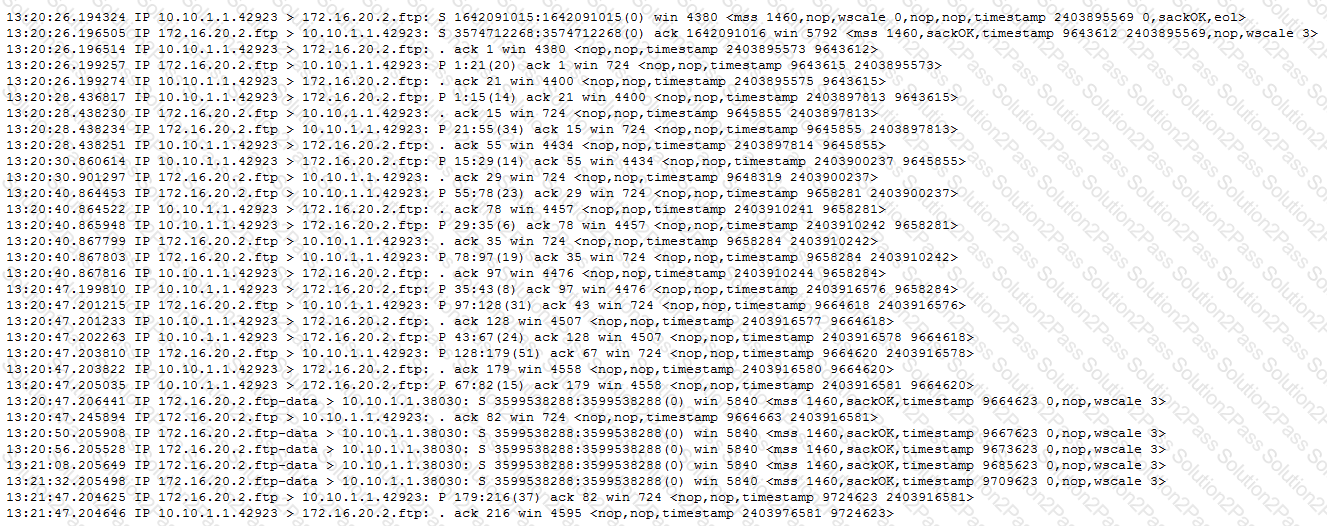
-- Exhibit --
Refer to the exhibit.
An LTM Specialist configures a virtual server to load balance to a pool of FTP servers. File transfers are failing. The virtual server is configured as follows:
ltm virtual ftp_vs {
destination 10.10.1.103:ftp
ip-protocol tcp
mask 255.255.255.255
pool ftp_pool
profiles {
tcp { }
}
vlans-disabled
}
Which change will resolve the problem?
-- Exhibit –
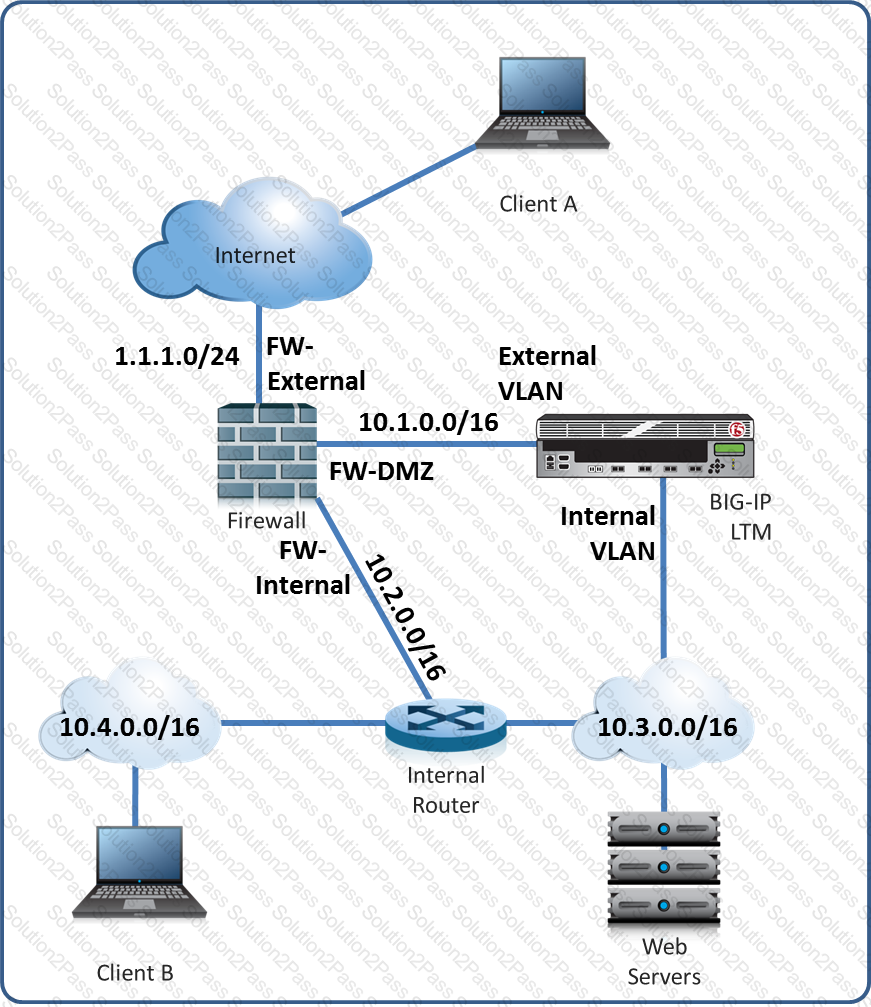
-- Exhibit --
Refer to the exhibit.
A layer 2 nPath routing configuration has been deployed. A packet capture contains a client connection packet with the following properties:
Source IP:
Destination IP:
At which two locations could the packet capture have been taken? (Choose two.)
What is the correct command to reset an LTM device to its default settings?
An HA pair of LTM devices configured in Active-Standby mode stops responding to traffic and causes an outage. The Active device becomes Standby, but the partner device stays in Standby mode instead of taking over as Active. A reboot and restart of the services brings the LTM device to Active mode for a short time, but then it goes into Standby mode again.
Which two configuration components caused this condition? (Choose two.)
